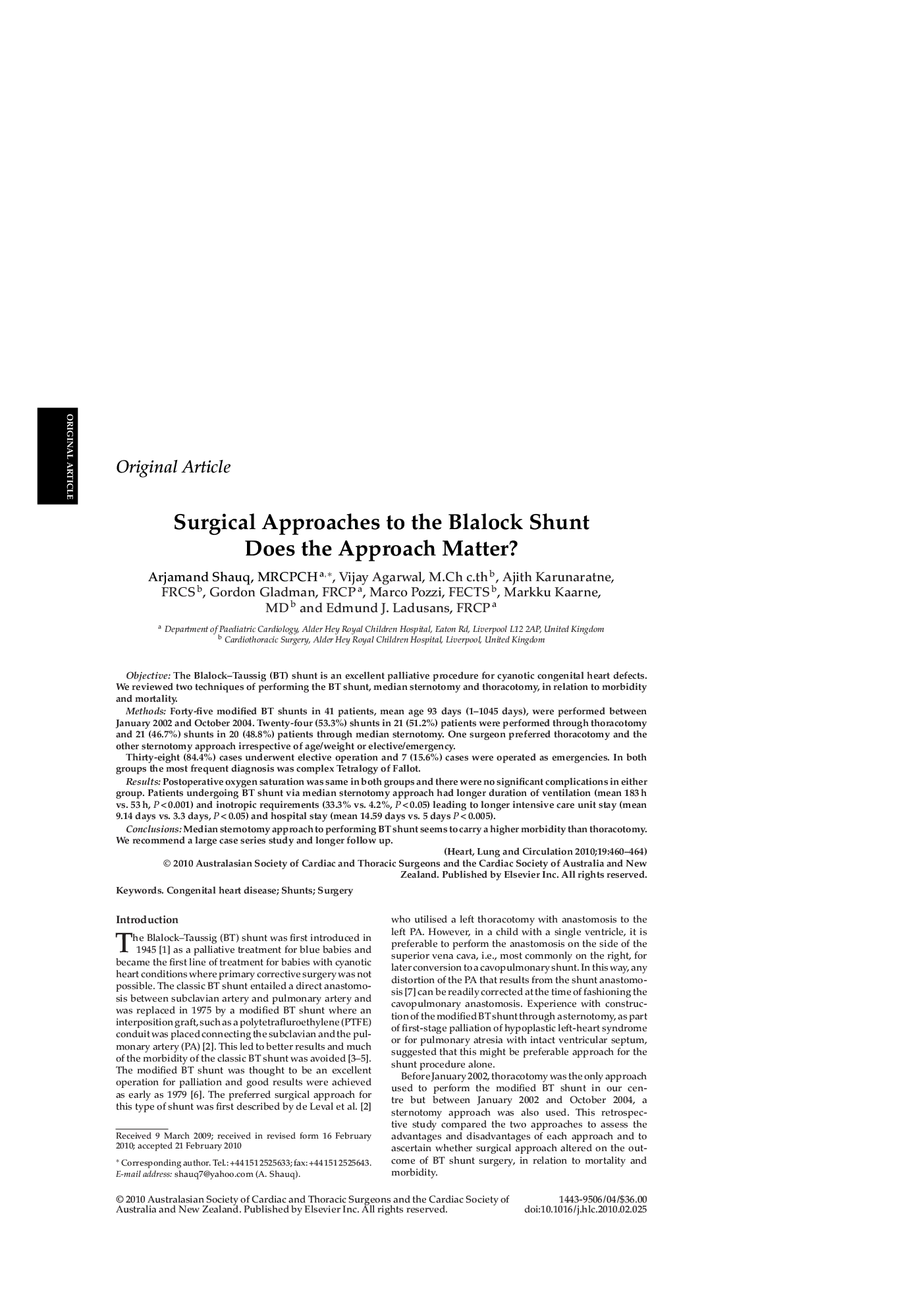| Article ID | Journal | Published Year | Pages | File Type |
|---|---|---|---|---|
| 2920613 | Heart, Lung and Circulation | 2010 | 5 Pages |
ObjectiveThe Blalock–Taussig (BT) shunt is an excellent palliative procedure for cyanotic congenital heart defects. We reviewed two techniques of performing the BT shunt, median sternotomy and thoracotomy, in relation to morbidity and mortality.MethodsForty-five modified BT shunts in 41 patients, mean age 93 days (1–1045 days), were performed between January 2002 and October 2004. Twenty-four (53.3%) shunts in 21 (51.2%) patients were performed through thoracotomy and 21 (46.7%) shunts in 20 (48.8%) patients through median sternotomy. One surgeon preferred thoracotomy and the other sternotomy approach irrespective of age/weight or elective/emergency.Thirty-eight (84.4%) cases underwent elective operation and 7 (15.6%) cases were operated as emergencies. In both groups the most frequent diagnosis was complex Tetralogy of Fallot.ResultsPostoperative oxygen saturation was same in both groups and there were no significant complications in either group. Patients undergoing BT shunt via median sternotomy approach had longer duration of ventilation (mean 183 h vs. 53 h, P < 0.001) and inotropic requirements (33.3% vs. 4.2%, P < 0.05) leading to longer intensive care unit stay (mean 9.14 days vs. 3.3 days, P < 0.05) and hospital stay (mean 14.59 days vs. 5 days P < 0.005).ConclusionsMedian sternotomy approach to performing BT shunt seems to carry a higher morbidity than thoracotomy. We recommend a large case series study and longer follow up.
